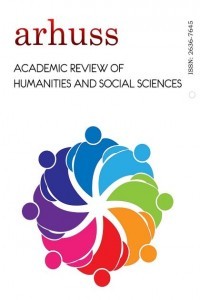Lacanyen Bilinçdışı ve Yeni Medya Estetiği
Çağdaş biyoteknolojiler bedenleri ve organizmaları doğal ve biyolojik varlıklar olarak değil, teknolojik aygıtlar, araçsal ortamlar, sembolik sistemler, kodlanmış iletişim araçları ve mecraları olarak düşünmemizi sağlayarak yaşamın ve doğanın mimetik takliti ve mekanik yeniden üretimi ile ilgili kuramların aksine, bedenleri ve organizmaları semiyotik, dilsel ve biyoinformatik yeniden üretim üzerinden farklı bir biçimde algılamamızı sağlar. Bu makale, Lacancı psikanaliz ışığında yeni medya estetiğini tartışarak bedenlerin, arzuların ve cinselliklerin biyoloji sonrası ve insan sonrası dönemde algılanışını inceleyecektir . Jacques Lacan, psikanalitik bilinçdışı ve arzu anlayışını, bilgi ve iletişim teknolojileri, modern biyoloji ve yapısalcı dilbilim arasındaki bağlantıların kesiştiği noktaya yerleştirir. Lacan tarafından yapısalcı dilbilimin, bilgi ve iletişim teknolojileriyle olan akrabalığı üzerinden haritalandırıldığı şekliyle bilinçdışı kavramı, onun dilbilimsel, biyolojik ve psikanalitik söylemler arasındaki kesişme alanında arzu ve cinselliği incelemesine olanak tanır. Bu biyoinformatik devrim, bedenler, arzular ve cinsellikler hakkında yeni düşünme biçimleri önererek günlük yaşamın estetik algılamalarını ve deneyimlerini dönüştürür. Bu makale, yeni medya sanatı eserlerinde bedenin parçalanmışlığına bakarak ve dijital arzuların ve cinselliklerin akustik ve görsel olarak yeniden haritalanması inceleyerek, bedenin çağdaş sanattaki tasvirini doğal ve biyolojik bir varlık olarak değil, biyoteknolojik bir aygıt, sembolik bir sistem ve çeşitli medya ağları ve sistemleri arasında akan söylemsel olan ve-de ayrıca söylemsel olmayan bir iletişim modu olarak konumlandıracaktır.
Anahtar Kelimeler:
Lacanyen Psikanaliz, Biyoteknolojiler, , Biyoenformatik, Teknolojik Bedenler, Yeni Medya Estetiği
LACANIAN UNCONSCIOUS AND NEW MEDIA AESTHETICS
Contemporary biotechnologies provide an entryway into thinking about bodies and organisms not as natural and biological entities but as informational media, technological apparatuses, instrumental mediums, symbolic systems and coded means of communication, replacing the theories and practices concerning mimetic imitation of life and mechanical reproduction of nature with the semiotic, linguistic, and bioinformatic reproduction of bodies and organisms. This article examines postbiological articulation of bodies, desires, and sexualities at the site of the convergence between Lacanian psychoanalysis and new media aesthetics. It is at the interstices of the connections between information and communication technologies, modern biology, and structural linguistics that Jacques Lacan locates his psychoanalytic conception of the unconscious and desire. The notion of the unconscious as it is mapped by Lacan over structural linguistics’ intrinsic kinship with information and communication technologies enables him to examine desire and sexuality at the site of the convergence between linguistic-informational, biological, and psychoanalytic discourses. This bioinformatic revolution transforms the aesthetic stakes of everyday life by suggesting new ways of thinking about bodies, desires, and sexualities. By drawing on acoustic and visual remappings of the body, fragmented and hybrid bodies, digital desires and sexualities in new media artworks, I analyze the body in contemporary art as a biotechnological apparatus, symbolic system, and discursive and non-discursive mode of communication flowing among various media networks and systems.
Keywords:
Lacanian Psychoanalysis, Biotechnologies, Bioinformation, Technological Bodies, New Media Aesthetics,
___
- Benjamin, W. (1969). Illuminations: Essays and Reflections. (H. Zohn, Trans.) New York: Schocken Books.
- Geoghegan, B. (2011). From Information Theory to French Theory: Jakobson, Levi- Strauss, and the Cybernetic Apparatus. Critical Inquiry, 96-126.
- Human Genome Project. Curated by Kroker, A. & Kroker, M. and Murray, T. Cornell University, ctheorymultimedia.cornell.edu.
- Johnston, J. (2010). The Allure of Machinic Life: Cybernetics, Machinic Life, and the New AI. Cambridge: The MIT Press.
- Lacan, J. (1981). The Four Fundamental Concepts of Psychoanalysis: The Seminar of Jacques Lacan Book XI. (A. Sheridan, Trans.) New York: W. W. Norton & Company.
- Lacan, J. (1988). The Seminar of Jacques Lacan Book II: The Ego in Freud’s Theory and in the Technique of Psychoanalysis 1954-1955. (S. Tomaselli, Trans.) New York: W. W. Norton & Company.
- Lafontaine, Celine. (2007). The Cybernetic Matrix of ‘French Theory. Theory, Culture & Society, 27-46.
- Liu, L. H. (2010). The Freudian Robot: Digital Media and the Future of the Unconscious. Chicago: The University of Chicago Press.
- Liu, Lydia H. “The Cybernetic Unconscious: Rethinking Lacan, Poe, and French Theory.” Critical Inquiry 36, (2010): 288 – 320.
- Murray, T. (2008). Digital Baroque: New Media Art and Cinematic Folds. Minneapolis: University of Minnesota Press.
- Seriot, P. (2014). Structure and the Whole: East, West, and Non-Darwinian Biology in the Origins of Structural Linguistics. Berlin: Walter de Gruyter Inc.
- Taussig, M. (1992). Mimesis and Alterity: A Particular History of the Senses. New York and London: Routledge.
- ISSN: 2636-7645
- Yayın Aralığı: Yılda 2 Sayı
- Başlangıç: 2018
- Yayıncı: Bursa Teknik Üniversitesi
Sayıdaki Diğer Makaleler
NAIROBI'DE (KENYA) KENTSEL GECEKONDULAR VE EŞİTSİZLİK: KURAMSAL BİR PERSPEKTİF
ULUSAL SAĞLIK SİSTEMLERİNDE TOPLAM FAKTÖR VERİMLİLİĞİ DEĞİŞİMİ: OECD ÜLKELERİ ÜZERİNDE BİR ÇALIŞMA
COVİD-19 GEÇİRMİŞ ÜNİVERSİTE ÖĞRENCİLERİNİN HASTALIK SÜRECİNE İLİŞKİN DENEYİMLERİ
